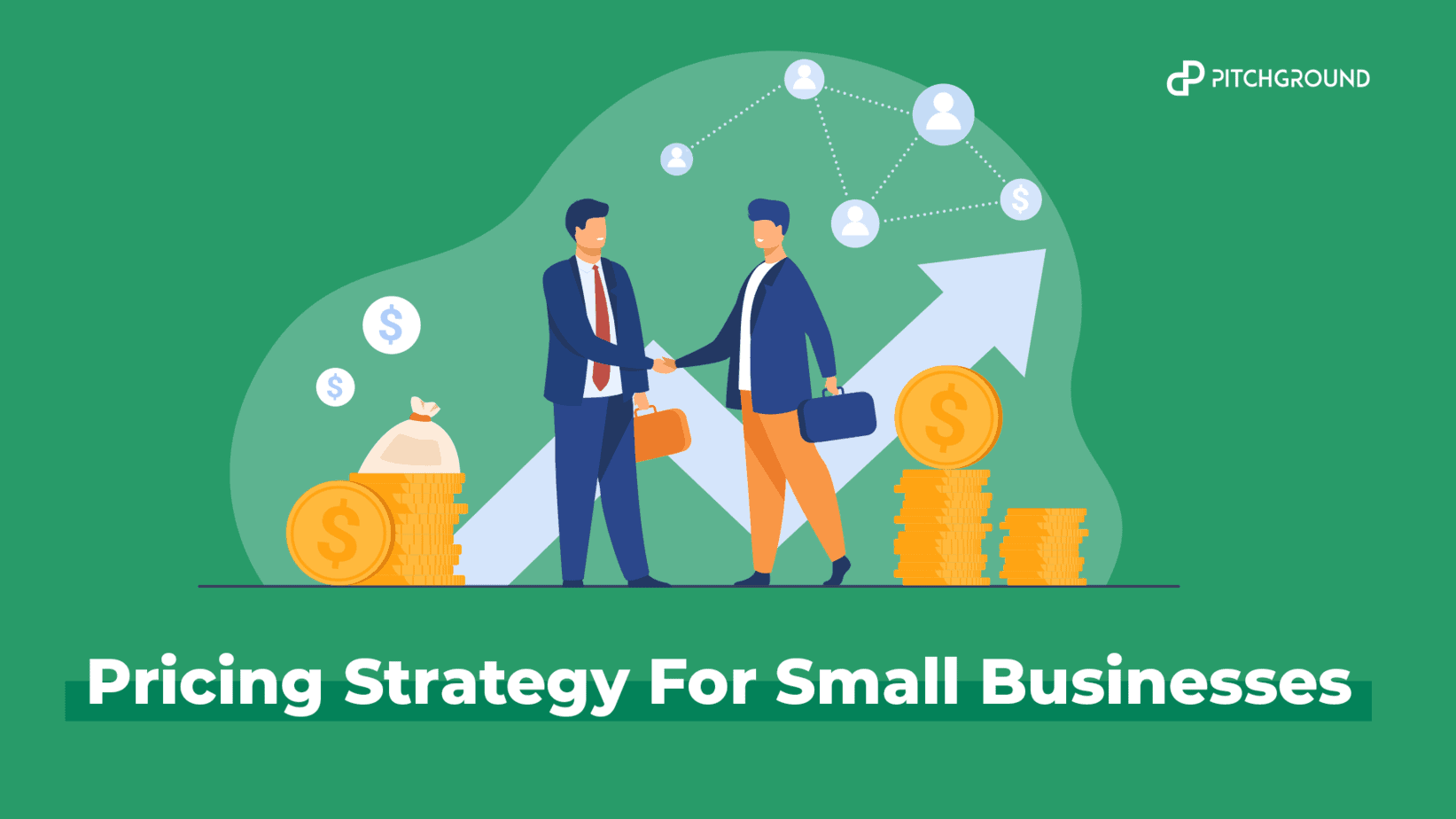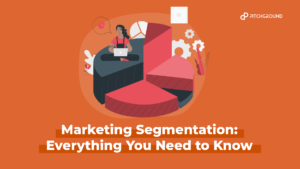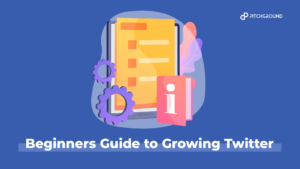When it comes to pricing, small businesses often struggle with how to price their products/services. They may not even realize that there are many different models available.
There are 11 different pricing models that you should consider before you decide on a final price.
These models range from free to $1,000 per month. Some of these models are very simple, while others require advanced math skills.
Read on if you’re looking for a way to get started with a pricing strategy for your small business. In this article, I’ll explain each model and provide examples of how to apply them to your business.
Statistics
Factual sentences referenced across top search results:
- Many companies focus on acquisition to grow their business, but studies have shown that slight variations in pricing can raise or lower revenue by 20-50%.
- Despite that, even among Fortune 500 companies, fewer than 5% have functions dedicated to setting the best price possible.
- Case studies that offer proof of the high quality of your products can boost willingness to pay by 10-15% in both B2B and DTC.
Definition of Pricing

Pricing is the process by which a business sets its prices. It can be viewed as an art, science, and/or a combination of both.
The pricing strategy should be based on the business goals and marketing objectives. It must consider all aspects of the business, including the cost of production, market conditions (all external factors), competitor pricing, customer needs, and expectations.
The goal of pricing is to maximize profits. It means that the price charged will depend on the value provided to customers. However, the cost cannot be too low because otherwise, people won’t buy, and if the price is too high, they might leave.
What are Pricing Strategies?
Pricing strategies determine how much customers pay for products or services. They are a part of your marketing strategy and have many different types, including fixed price, auction, subscription, and free trials.
Each type has its benefits and drawbacks, so it’s essential to understand how each works before choosing the best option for your business.
Fixed Price: Fixed price pricing means that customers pay a set amount for every unit sold. It’s usually the most popular choice for businesses because it provides predictability and stability.
However, fixed-price plans aren’t always ideal for everyone. For example, if you sell a service, a customer might choose to purchase multiple units. In this case, you’d lose money because you would have charged too little per unit.
Free Trial: Free trial pricing allows customers to try a product or service without paying anything upfront. The downside is that it doesn’t provide enough certainty for businesses. Customers might cancel after trying the product, leaving you with no revenue.
Subscription: Subscriptions allow customers to pay a monthly fee for access to a product or service. It gives businesses more control over their revenues because they can charge customers based on usage instead of selling a single unit.
Auction: An auction is similar to a subscription, except customers bid against other customers to win the product or service.
This method is excellent for businesses that offer limited quantities of items. However, auctions can be challenging, especially when dealing with large inventory amounts.
The Bottom Line: Pricing strategies are essential to running a successful business and having a more significant profit margin. Ensure that you know how each strategy works before deciding which one is best for your company.
Price Elasticity of Demand

One of the most important aspects of pricing is determining the price elasticity of demand. Price elasticity refers to the degree to which consumers change their purchasing behavior based on the price of a product.
For example, if the price of a product increases, consumers might purchase less of it. Conversely, if the price decreases, consumers might buy more of it.
There are two main types of price elasticity: absolute and relative. Absolute price elasticity measures the percentage change in quantity demanded when the price of a product changes.
Relative price elasticity measures the percent change in quantity demanded when other factors remain constant.
Absolute price elasticity is calculated by dividing the percentage change in quantity by the percentage change in price. Relative price elasticity is calculated using the same formula, except the denominator includes all other variables.
For example, let’s say that the price of a product has increased from $10 to $20. The absolute price elasticity would be 0.5 since the quantity demanded decreased by half.
However, the relative price elasticity would be -0.2 since the quantity demanded declined by 20% while the price remained unchanged.
To calculate absolute price elasticity, divide the percentage change in quantity divided by the percentage change in the price. To calculate relative price elasticity, divide both quantities and prices together.
The higher the absolute price elasticity, the more sensitive consumers are to price changes. The higher the relative price elasticity, the less sensitive consumers are to price fluctuations.
The Importance of Nailing your Pricing Strategy

Pricing is a critical part of running a successful business. It’s the foundation upon which everything else rests, so it needs to be done correctly from the very beginning.
It’s essential to understand the different pricing models available to you, including free, paid, and subscription plans.
Free plans are usually the best option if you’re just starting since they allow you to test the waters without spending too much money.
Paid plans are generally used for businesses that offer premium services, while subscription plans are typically reserved for companies that provide recurring revenue streams.
Regardless of which type of plan you choose, it’s essential to nail down your pricing strategy early on.
Don’t wait until later to decide whether or not you should charge for your service, or you might charge a price that doesn’t reflect your actual value.
Instead, figure out precisely what you want to charge and set a firm price point. Once you’ve established your pricing structure, you’ll be able to build a solid reputation based on your ability to deliver quality products and services.
Keep in mind that pricing is constantly changing. As technology evolves, so does the market; therefore, you’ll need to adjust your pricing accordingly. The key is to stay flexible and adaptable to provide outstanding customer experiences.
A Winning Pricing Strategy:
Convinces Customers to Buy:
Pricing is one of the most important parts of selling online. It’s easy to get caught up in the details of pricing, but if you focus on the big picture, you’ll be able to create a winning strategy that will lead to higher sales.
First, figure out what your ideal customer wants. What features would they expect from a service or product? How much money are they willing to spend? Once you understand these factors, you can set prices accordingly.
Second, consider the competition. Is there another company offering similar products or services? If so, how does their pricing compare to yours? Are they charging less than you are? If so, you might want to rethink your pricing strategy.
Third, look at your costs. Do you need to hire additional staff to handle increased demand? Will you need to invest in new equipment? In short, look at the production costs and how it affects you. These expenses add up over time, so it’s important to factor them into your overall plan.
Lastly, try to figure out how to create a market demand for the product using these three points.
When creating your pricing strategy to increase your profit margin, keep these three points. You’ll be glad you did!
Gives Your Customers Confidence in your Product:
Pricing is always a tricky subject, especially if you’re just starting. It’s easy to overprice yourself out of business, but underpricing can lead to customers turning off from purchasing your products or services.
To avoid these problems, you’ll want to make sure that you’re pricing your products and services reasonably.
When you set prices, consider whether or not they’re fair and reasonable. Also, make sure that you’re charging enough to cover costs while still making a profit.
It’s also essential to ensure that your pricing strategy doesn’t put too much pressure on your customers.
Don’t keep the selling price too low, or you might lose money on every sale. Instead, price your products or services based on what you believe they’re worth. (value-based pricing)
In addition to setting prices, you’ll also want to make sure that your customers feel confident in your products or services.
Give them plenty of reasons to buy from you, and let them that you’re committed to providing quality products and customer service.
It will give your customers confidence in your company and increase your customer loyalty at the same time, and they’ll be more likely to purchase from you again.
A Weak Pricing Strategy:
It makes customers feel uncertain about buying
Many businesses struggle with pricing strategy. It seems like every other business has a different approach to pricing, and many fail to understand the benefits of having a consistent pricing structure.
One thing that most businesses agree on is that price is a significant factor in determining whether or not someone buys from you.
However, many companies still struggle with pricing strategy. When you look at the target market, many companies offer similar products or services at vastly different prices.
This inconsistency creates confusion among consumers, leading to lost sales. In fact, according to research conducted by Harvard Business Review, consumers are willing to pay $1.50 more per item if they know exactly where their money is going. Therefore, your customer perception can be the very thing that sets you apart from your competition.
Targets the Wrong Customers
Pricing is one of the essential parts of running a successful business. It’s crucial to understand your ideal customer and then set prices accordingly.
You can use surveys or focus groups to figure out who your perfect customer base is and how much they’re willing to pay.
These methods allow you to ask potential customers questions about their needs and preferences. Once you’ve gathered enough data, you can create a pricing strategy based on your findings.
For example, if you found that your ideal customer is someone who has a household income of $50k-$100k per year, you could price your products accordingly. However, if you find that they prefer to buy from companies that offer free shipping, you might decide to charge a premium for your products instead.
You’ll always be in a competitive market filled with business owners fighting tooth and nail to acquire customers; your ultimate goal should be to focus on customers and what they want, i.e., consumer demand.
It’s important to remember that your pricing strategy shouldn’t just be focused on making money. Instead, you should consider other factors, including brand image and reputation.
For instance, if you sell organic food, you may want to avoid charging too little for your products. As long as you’re offering quality products at fair prices, you’ll likely attract a loyal following of customers.
Types of Pricing Strategies
Competitive Pricing Strategy
There are many different pricing strategies available to businesses, including competition-based pricing strategy. In this type of pricing strategy, prices are determined based on the amount of competition a particular service has.
For example, suppose a business offers a top-rated service to its customers. The original price for that service might be higher than other services offered by the same company.
This type of pricing strategy works best for highly sought-after products. It’s also helpful to offer discounts during certain times, such as Black Friday or Cyber Monday. These events tend to bring in many shoppers who are willing to pay more for a deal.
In addition to offering discounts, you can also offer special promotions. Promotions are usually limited in duration, so you can give them out sparingly and still reap the benefits. For example, you could offer a free trial period for a service or a discount on a specific product.
Pricing strategies aren’t just useful for online businesses; they work just as well for brick-and-mortar stores. The key is to determine what kind of pricing strategy will work best for your business.
Cost Plus Pricing Strategy
One of the most common pricing models used today is the cost-plus pricing strategy. With this model, customers pay a fixed price per unit sold and receive additional discounts based on volume.
For example, if you sell widgets for $10 each and you charge $15 per widget, you would add 10% to the total cost of every widget sold.
This type of pricing works best for products requiring large units, such as software licenses.
However, it doesn’t work very well for web hosting, where you typically provide a service for a set fee. In these cases, it’s much easier to offer different packages that include various service levels.
Offering multiple levels is that you can attract a broader range of customers who are willing to spend more money.
For example, you could offer three tiers of service: basic, premium, and ultimate. Each tier includes different features, and you can charge different prices for each tier.
Dynamic Pricing Strategy
One of the most common pricing strategies online businesses use is dynamic pricing. Dynamic pricing refers to the practice of changing prices based on demand. For example, if you sell widgets, you might offer a special discount during the holidays.
In addition to discounts, you can also offer promotions and other incentives to drive sales. Some businesses offer free shipping or a percentage off for specific products. Others provide exclusive deals to customers who sign up for newsletters or follow them on social media.
Many companies now rely heavily on dynamic pricing for their eCommerce business.
It’s an intelligent way to generate revenue while keeping costs low. This type of strategy works best when selling physical goods, but it can work just as well for digital services.
There are several different types of dynamic pricing strategies available. The two main options are auction-based and fixed price. An auction-based system allows buyers to bid on items.
When someone bids on an item, the seller sets a higher price than the current market value. Once the bidding ends, the seller then lowers the price until it reaches the highest bidder’s expense.
Fixed price pricing is similar to auction-based pricing, except that the seller sets a single price for each item.
If no one buys an item for its total price, the seller drops the price until it sells. With this method, sellers set a minimum price and a maximum price.
The final option is a hybrid approach. Instead of setting a single price for each individual item, you create tiers of prices. For example, you could have a base tier with a standard price, followed by three additional tiers at 25%, 50%, and 75% below the base price.
Regardless of which pricing strategy you choose, remember that you need to adjust your prices frequently. Otherwise, your customers will become frustrated and stop visiting your website.
Freemium Pricing Strategy
There are many different types of pricing strategies available to businesses today. Some are free, while others require payment. The most popular type of pricing strategy is freemium. It allows customers to try out a service without paying anything upfront.
With freemium pricing, you offer a limited version of your product or service for free. Once someone has tried it out, they can either continue using the service or cancel if they decide they don’t want to use it anymore.
This pricing strategy works best for services that aren’t very expensive. For example, a company offering a $5 per month subscription to its software might give away a free trial period.
When someone signs up during the trial period, they receive access to the full version of the software.
In addition to providing value, freemium pricing helps companies build brand awareness and customer loyalty.
Customers who sign up for a free trial are much more likely to purchase a paid plan later. However, after the trial period ends, they must pay to continue using the software.
It’s important to remember that freemium pricing doesn’t work for every business. If you’re selling a high-quality product that costs more than $10,000, you probably shouldn’t offer a free trial.
Instead, focus on creating a long-term relationship with your customers. Offer discounts and other incentives to entice them to buy from you again.

High-Low Pricing Strategy
The High-Low pricing strategy involves offering two prices for a single item. The higher price is usually reserved for customers who are willing to pay extra for convenience or exclusivity. The lower price is typically offered to everyone else.
For example, if you sell a $100 pair of shoes, you could offer a $50 version of the same pair that doesn’t include the fancy packaging.
Or you could offer a $150 version that includes the fancy packaging. Either way, you’re still selling the same pair of shoes, just at different prices.
By doing this, you give customers the option to buy the cheaper version if they prefer it. But you also allow them to purchase the more expensive version if they’d rather spend more money. It’s a win-win situation for both parties.
Hourly Pricing Strategy
One of the most common pricing models used today is hourly pricing. It’s easy to understand, and it works well for many businesses. However, if you’re running a service business, hourly pricing might not work as well as other options.
For example, let’s say you run a cleaning company. Hourly pricing would work fine if you were charging $10 per hour. But what happens if you charge $20 per hour? That means you’d end up making less money overall.
Instead, consider a fixed price model. With this type of pricing strategy, you set a flat fee upfront for a project. For example, you could offer a package deal where you clean two rooms for $100. Then, you’d charge $50 per room instead of $10 per hour.
This approach allows you to make more money while still providing value to customers. In addition, it helps prevent overcharging since you know exactly how much you’ll earn from each customer.
Price Skimming Strategy
Pricing strategies are different from pricing plans in that they focus on the price per unit rather than the total cost. Price skimming is a pricing strategy is a popular method used by many businesses to maximize profits while keeping prices low.
You set a fixed sale price for each item sold in skimming pricing. For example, if you sell $10 worth of widgets every month, you might charge $1 per widget. In this case, you would sell 10 widgets in a month and earn a $10 profit.
This type of pricing strategy works best for relatively inexpensive products. However, it can also work for services, especially if you offer many units. It’s an excellent option for businesses that rely heavily on repeat customers.
To implement a skim pricing strategy, you must determine the average value of each unit sold. Then, you can calculate the amount of money you’d need to spend to cover the business costs.
Once you reach that point, you can decide whether to continue selling the items or stop offering them altogether.
If you were able to sell more widgets, you could raise the price and still stay profitable. For example, let’s say that you sell $10 worth per widget. The average value of a widget is $5. So, you’d need to spend $50 to break even.
However, if you only sold $10 worth of widgets per month, you wouldn’t be able to afford the higher prices. Instead, you’d have to cut back on other expenses, such as advertising or hiring new employees.
Penetration Pricing Strategy
Pricing is always tricky, especially if you’re just starting. It’s easy to fall into the trap of overpricing yourself, but that could lead to losing potential customers. However, pricing too low can also hurt your business.
It’s best to start with an initial price covering your overhead costs while still making enough money to cover your expenses. Once you reach profitability, price increases can generate additional revenue.
There are two main types of pricing strategies: penetration and demand-based pricing. Penetration pricing focuses on charging a set amount per customer. Demand-based pricing allows you to assign different amounts based on the number of visitors to your website.
In both cases, you’ll want to consider the following factors:
• The cost of acquiring each customer
• How much profit do you expect to make from each customer
• Whether you plan to offer discounts
• Any other costs associated with running your business

Premium Pricing Strategy
Premium pricing is when customers pay a higher price for a product or service than the average customer. This strategy aims to attract more customers who value the product or service enough to pay a little extra for it.
There are many different ways to implement premium pricing, including tiered pricing, volume discounts, and subscription plans. Tiered pricing is where customers pay a set amount per month or per year based on the number of products or services they purchase.
Volume discounts are similar to tiered pricing, except customers pay less if they buy more instead of paying a fixed amount each month.
Subscription plans are another type of premium pricing strategy. With these plans, customers pay a monthly fee for access to many products or services.
Premium pricing is a powerful tool for businesses, especially when combined with other marketing tactics.
For example, you could offer a free trial period to potential customers, then charge them a premium price after the trial period expires. Or, you could give a discount to loyal customers who refer others to your business.
Regardless of whether you choose to implement premium pricing, it’s important to remember that it requires careful planning.
Make sure that you clearly understand why you’re offering premium pricing and how much money you expect to earn from it. Also, consider how your customers will react to premium pricing. Will they appreciate the additional benefits? Are they likely to switch to a competitor?
Project-Based Pricing Strategy
Pricing strategies are different based on the type of service you provide. For example, project-based pricing might work best for you if you run a business selling widgets online. Project-based pricing allows customers to pay for services over time instead of upfront.
This strategy works exceptionally well for businesses that offer recurring services, like web hosting or software subscriptions.
It’s also useful for freelancers who charge hourly rates. Clients can choose to pay for a specific amount of time rather than a fixed price in these cases.
There are many benefits to using project-based pricing. Clients can budget for services without worrying about how much money they spend upfront. It means that they can plan accordingly and avoid spending too much.
Clients also benefit from having flexibility. Instead of being locked into a long-term contract, they can cancel at any point. It gives them the freedom to change plans whenever necessary.
However, there are drawbacks to project-based pricing. The biggest drawback is that clients must commit to a set payment schedule. If they decide to stop paying after a certain period of time, they lose access to the service.
To combat this problem, you can offer discounts for early payments. You can also offer additional services for free, such as a trial period. These options allow clients to try out your service before committing to a full subscription and give you a competitive edge.
Another downside to project-based pricing is that it doesn’t always align with client expectations. Some clients expect to pay a flat fee for their services. Others prefer to pay per hour.
To address this issue, you can create custom packages that include both types of pricing. For example, you could offer a package that includes a monthly subscription and an hourly rate.
The key takeaway here is that you shouldn’t limit yourself to one particular pricing model. Instead, consider offering multiple options so that you can cater to individual needs.
Value-Based Pricing Strategy
It is considered one of the most effective pricing strategy. It’s a strategy that allows businesses to charge target customers based on their value. For example, if you sell widgets online, you could charge $10 per widget. However, if you sell widgets that cost $100 each, you would likely charge $50 per widget.
This type of pricing model works best for relatively inexpensive products. However, it doesn’t work well for expensive items that require effort to create. In these cases, you might consider charging a flat fee instead.
For example, if you were selling custom t-shirts, you might offer two different options: a standard shirt for $30 or a premium shirt for $60. The difference between the two shirts is that the premium shirt requires more design work and takes longer to complete.
In both cases, the customer pays the same price. But the premium option provides more value to the customer. Therefore, it should be priced higher.
Bundle Pricing Strategy
Bundle pricing allows customers to purchase multiple products together for a discounted price. It’s a great way to attract new customers who might not otherwise buy from you.
However, bundle pricing can hurt your bottom line if you aren’t careful. For example, if you offer a $50 bundle deal for two items, you lose money on every sale. So, if you sell 100 bundles, you would only make $500 instead of $1,000.
To avoid losing money on each bundle, you need to ensure that the value of the individual products in the bundle is higher than the cost of the bundle itself. In other words, you need to make enough profit on each item sold individually to cover the cost of the bundle.
It is where bundling becomes tricky. If you charge too much per item, you could make less overall revenue. However, if you charge too little, you risk losing potential sales. The best approach is to create a bundle that offers both convenience and value.
For example, if you were selling a $10 gift card to a restaurant, you’d probably choose to include a free appetizer or dessert. It would give the customer more bang for their buck while still offering a convenient option.
Psychological Pricing Strategy
This pricing strategy focuses on creating value for customers through an excellent price. Instead of focusing solely on price, you can create value by offering free trials, customer support, or discounts.
These offers allow customers to try your products without paying the total cost.
It’s also important to remember that psychology plays a role in pricing decisions. For example, if you offer a discount, you might expect sales volume to drop off after the initial rush. However, if you provide a special promotion, you might see increased sales.
Geographical Pricing Strategy
Geographical pricing is a strategy where prices vary based on location. It’s most commonly used for expensive items to ship, such as electronics or furniture.
For example, if you sell a $1,000 laptop online, you might charge customers $150 in shipping costs. However, if you’re selling a $100 laptop in New York City, you could charge just $50 shipping fees.
The geographical pricing strategy works best for products that aren’t quickly shipped, such as clothing or jewelry. It’s less effective for physical goods that require assemblies, such as furniture or appliances. In these cases, you may be able to offer free shipping instead of geographic pricing.
Frequently Asked Questions
How do you determine the selling prices of a product?
I have been doing some research on how to price my products. I am not sure if it is right or wrong, but I was thinking about pricing them based on what other people are charging for similar items.
For example, I would look at the average price of similar items and calculate a percentage based on that number.
Then I would use that percentage as my starting point. Is this an excellent way to go about pricing my products?
What is the difference between wholesale and retail pricing?
Wholesale pricing refers to the price you set when you sell your products. Retail pricing refers to the price you charge your customers. It would help if you never forgot that a markup (or profit) would be added to the wholesale price before you turn around and sell your products to your customers.
What is the simplest pricing strategy?
The most obvious answer would be to charge a flat rate for each service. It works well when you are charging by the hour, but it doesn’t work if your services are billed hourly and multiple tasks are involved.
What is a pricing curve?
A pricing curve is the price of a good or service that changes over time. It’s also known as a dynamic price, and it can be used to help determine how much you should charge for your product or service.
Pricing curves are often used with subscription-based businesses. For example, a company might offer a monthly subscription package for its software. The price of the package could increase after a certain period of time.
How to Conduct a Pricing Analysis?
Pricing is one of the most important aspects of running a successful business. It's vital to understand how much customers are willing to pay for your products or services and how much profit you can expect from each sale.
To conduct a pricing analysis, you'll need to gather data from past sales and analyze it.
The best place to start is by reviewing your customer feedback.
Ask yourself questions like:
• What was the average price per item?
• How many items were sold?
• Were there any discounts offered?
• Did the customer buy multiple items?
• Was the customer satisfied with the service?
You'll gain insight into the types of customers who purchase your products and services by answering these questions.
You can begin to determine whether prices are too low or too high. Next, you'll need to look at similar businesses.
Find out how much they charge for similar products or services and compare that to your costs. It will give you a rough estimate of how much money you could potentially earn if you raised your prices.
Finally, you'll need to consider the competition. Look at other companies selling similar products or services and see how much they charge. If you can undercut their prices, you might be able to attract more customers.
Once you've gathered all of this data, you'll be ready to create your own pricing strategy. Determine where you want to set your prices based on your research and adjust accordingly. Make sure that you offer enough variety in your products and services to appeal to different kinds of customers.
What to consider when setting your pricing strategy?
Pricing is one of the most important aspects of running a successful business. It's important to set prices that align with your goals and objectives while still being competitive enough to attract customers.
There are many different factors that you should consider when determining your pricing strategy. Some of these include:
• The type of product or service you sell
• How much competition exists in your industry
• What other companies charge for similar products
• How long it takes to build a customer relationship
• Whether you offer free trials or discounts
• How much your competitors charge
• How much money do you expect to earn from each sale
• How much time and effort did you put into building your brand
• How much you spend on advertising
• How much you invest in research and development
• How much do you plan to spend on marketing
• How much do you expect to lose if you fail
• How much you'd like to earn
• How much you would like to save
• How much you feel comfortable charging
• How much do you believe you can charge
• How much do you think potential customers value your product or service
• How much you're willing to risk losing
The Bottom Line:
In conclusion, if you’re looking to increase sales and profits for your small business, you should consider using pricing strategies like the ones described here. They’re proven to work, and they’re easy to implement. Plus, they’re fun to use!



